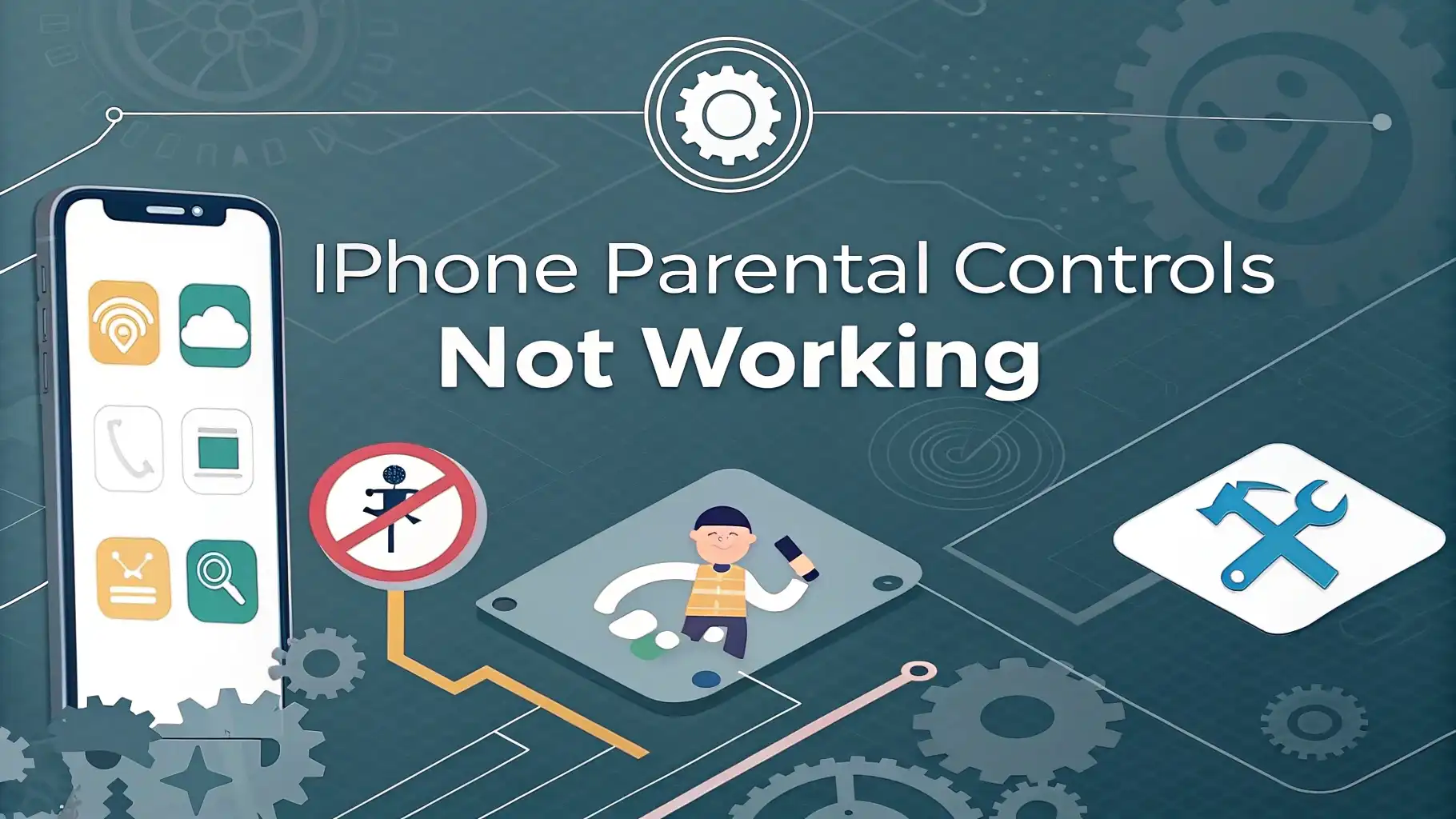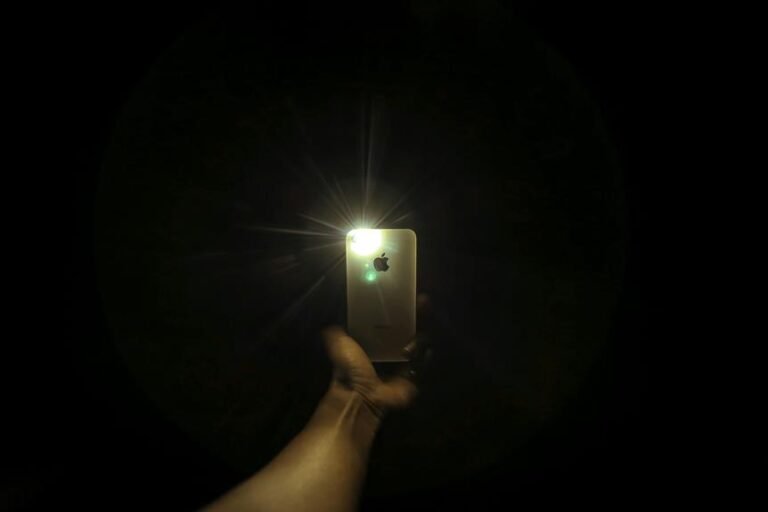iPhone Parental Controls Not Working: Complete Troubleshooting Guide
Parents across the globe are struggling with a frustrating problem: iPhone parental controls simply aren’t working. Screen Time limits get bypassed, app restrictions fail, and children find creative ways around every digital boundary you set.
If you’re pulling your hair out because your carefully configured parental controls seem useless, you’re not alone.
This comprehensive guide reveals exactly why iPhone parental controls fail and provides proven solutions that actually work. You’ll discover the hidden settings that sabotage your efforts, learn step-by-step fixes for common problems, and find alternative strategies when Apple’s built-in tools fall short.

Key Takeaways
- Misconfigured settings are the primary cause of Screen Time failures. Apps in the “Always Allowed” list bypass all limits, and forgetting to enable “Block at End of Limit” renders restrictions useless. Parents must review these critical settings first.
- Children exploit system loopholes to circumvent restrictions. Common tactics include deleting and reinstalling apps to reset usage data, changing time zones to extend limits, and accessing web versions of blocked apps through Safari.
- Software bugs and sync issues frequently break parental controls. iOS updates can introduce glitches, Family Sharing problems prevent settings from syncing across devices, and outdated iOS versions on different devices cause control failures.
- A Screen Time passcode is absolutely essential for effective parental controls. Without this passcode, children can easily disable Screen Time entirely or modify restrictions without parental knowledge.
Why iPhone Parental Controls Stop Working
iPhone parental controls fail for several interconnected reasons that often frustrate parents. Misconfigured settings represent the most common culprit behind Screen Time malfunctions. When parents add apps to the “Always Allowed” list, those applications completely bypass any time limits or restrictions.
Software glitches from iOS updates frequently break existing parental control configurations. Apple’s updates sometimes introduce bugs that prevent Screen Time from functioning correctly. Additionally, sync issues between devices can cause settings to disappear or fail to apply consistently across all family devices.
Children also discover various methods to circumvent restrictions. They may delete and reinstall apps to reset usage counters, change device time settings to extend their allowed screen time, or access blocked content through alternative methods like web browsers.
The Always Allowed List Problem
The “Always Allowed” list creates a massive loophole in iPhone parental controls that many parents overlook. Any app added to this list completely bypasses all Screen Time restrictions, including app limits and downtime schedules. Parents often unknowingly add problematic apps to this list during initial setup.
Educational apps frequently end up on the Always Allowed list with good intentions, but children exploit these apps for entertainment rather than learning. Social media apps, games, and entertainment platforms should never appear on this list if you want meaningful restrictions.
Review your Always Allowed list immediately by going to Settings > Screen Time > Always Allowed. Remove any apps that shouldn’t have unlimited access. Keep only essential communication apps and genuine educational tools that your child needs for schoolwork.
Missing Screen Time Passcode Issues
Operating iPhone parental controls without a Screen Time passcode is like leaving your front door unlocked. Children can easily disable Screen Time entirely or modify any restrictions you’ve set when no passcode protects these settings. This fundamental security gap renders all other parental control efforts meaningless.
Many parents skip setting a Screen Time passcode during initial configuration, assuming their device passcode provides sufficient protection. However, Screen Time requires its own separate passcode to prevent unauthorized changes to parental control settings.
Set a Screen Time passcode immediately through Settings > Screen Time > Use Screen Time Passcode. Choose a code different from your device unlock passcode, and never share this code with your children. This single step dramatically improves the effectiveness of all other parental control measures.
Block at End of Limit Settings
The “Block at End of Limit” setting determines whether app limits actually enforce restrictions or merely provide gentle reminders. Without enabling this crucial setting, children can simply ignore time limits and continue using restricted apps indefinitely. The setting acts as a suggestion rather than a firm boundary.
This setting appears in multiple locations within Screen Time configurations, and parents must enable it for both individual app limits and category limits. Missing this setting in even one location can create gaps that children quickly discover and exploit.
Enable “Block at End of Limit” for every restriction you create. Navigate to Settings > Screen Time > App Limits, select each limit, and ensure the toggle is activated. Similarly, check Settings > Screen Time > Downtime and verify that “Block at Downtime” is enabled for scheduled restriction periods.
iOS Update and Software Bugs
iOS updates frequently introduce bugs that break existing parental control configurations. Screen Time functionality can completely stop working after major iOS updates, leaving parents scrambling to understand why their carefully configured restrictions suddenly fail. These bugs often persist for weeks or months before Apple releases fixes.
Version mismatches between devices create additional problems for families using multiple Apple devices. When a parent’s iPhone runs a newer iOS version than their child’s iPad, Family Sharing parental controls may stop synchronizing properly.
Keep all family devices updated to the same iOS version whenever possible. Check for updates regularly through Settings > General > Software Update. If Screen Time stops working after an update, try toggling the feature off and on again, which often resolves temporary glitches introduced by new iOS versions.
Date and Time Setting Problems
Incorrect date and time settings can completely sabotage Screen Time functionality. Children often disable “Set Automatically” in Date & Time settings to manipulate their device’s clock and extend screen time limits. They may also change time zones to gain additional hours of app usage.
Manual time adjustments confuse Screen Time’s internal tracking mechanisms, causing limits to reset incorrectly or fail to activate when scheduled. These manipulations are particularly common among tech-savvy children who understand how time-based restrictions work.
Verify that “Set Automatically” is enabled in Settings > General > Date & Time on all family devices. Consider restricting access to Date & Time settings through Content & Privacy Restrictions to prevent children from manipulating these critical settings. Regular checks ensure that time-based restrictions function as intended.
App Deletion and Reinstallation Tricks
Children frequently delete and reinstall apps to reset Screen Time usage data and bypass established limits. This technique effectively gives them unlimited access to restricted applications by exploiting how Screen Time tracks app usage. Each reinstallation appears as a fresh start to the system.
The deletion method works because Screen Time associates usage data with specific app installations rather than maintaining persistent records across deletions. When children reinstall deleted apps, usage counters reset to zero, and time limits start fresh.
Monitor app installations and deletions through Screen Time reports, which show when apps are installed or removed. Consider using Content & Privacy Restrictions to prevent app deletions entirely, or set up notifications for app installations to catch this behavior quickly.
Family Sharing and iCloud Sync Issues
Family Sharing problems frequently cause parental control settings to fail across multiple devices. Settings configured on a parent’s device may not sync to children’s devices due to iCloud connectivity issues, account problems, or Family Sharing configuration errors. These sync failures leave children’s devices without proper restrictions.
Account mismatches between family members can prevent Screen Time settings from applying correctly. If family members use different Apple IDs or have incomplete Family Sharing setup, parental controls won’t function across all devices as expected.
Verify Family Sharing configuration through Settings > [Your Name] > Family Sharing on all devices. Ensure all family members appear in the list and have appropriate roles assigned. Sign out of iCloud and back in if sync problems persist, which often resolves connectivity issues affecting parental control synchronization.
Content and Privacy Restrictions
Content & Privacy Restrictions provide an additional layer of parental control that many parents underutilize. These settings can prevent children from accessing web versions of blocked apps through Safari, closing a common loophole that Screen Time alone cannot address. They also control access to system settings that children might manipulate.
Web-based app access represents a significant weakness in app-based restrictions. Children can often access social media platforms, games, and entertainment content through web browsers even when the corresponding apps are blocked or limited.
Configure Content & Privacy Restrictions through Settings > Screen Time > Content & Privacy Restrictions. Enable restrictions for web content, app installations, and system setting changes. These additional controls work alongside Screen Time to create more comprehensive parental oversight.
Third Party Parental Control Solutions
When Apple’s built-in Screen Time consistently fails, third-party parental control applications often provide more reliable alternatives. Dedicated parental control apps offer stricter blocking mechanisms and more comprehensive monitoring capabilities than Screen Time. These applications typically use different technical approaches that are harder for children to circumvent.
Professional parental control software often includes features like real-time monitoring, detailed activity reports, and more granular control options. Many parents find these solutions more dependable for maintaining consistent digital boundaries.
Research reputable third-party parental control applications if Screen Time continues to fail despite proper configuration. Popular options include dedicated apps designed specifically for parental oversight. However, carefully review privacy policies and security practices before installing any third-party monitoring software on family devices.
Advanced Troubleshooting Steps
When basic troubleshooting fails to resolve Screen Time issues, advanced solutions may be necessary. System-level problems sometimes require more intensive fixes like iOS system recovery or complete device resets. These solutions should be attempted only after exhausting simpler troubleshooting options.
Complete device resets followed by backup restoration can resolve persistent Screen Time glitches. Some parents report success with backing up their child’s device, performing a factory reset, and then restoring from the backup while minimizing changes to Screen Time settings.
Contact Apple Support if advanced troubleshooting steps don’t resolve persistent issues. Apple’s technical support team can provide device-specific guidance and may be aware of known issues affecting your particular iOS version or device model. Document all troubleshooting steps you’ve attempted before contacting support.
Frequently Asked Questions
Why do my Screen Time limits keep getting bypassed?
Check your Always Allowed list and ensure “Block at End of Limit” is enabled for all restrictions.
Can children delete apps to reset Screen Time limits?
Yes, deleting and reinstalling apps resets usage data and bypasses time limits.
Why don’t my parental controls sync between devices?
Family Sharing configuration issues or iCloud sync problems often prevent settings from syncing properly.
Should I use a Screen Time passcode?
Absolutely. Without a passcode, children can easily disable or modify all parental control settings.
Do iOS updates break Screen Time functionality?
Yes, iOS updates frequently introduce bugs that can cause Screen Time to malfunction temporarily.
Can children change time settings to bypass limits?
Yes, disabling “Set Automatically” in Date & Time settings allows manipulation of time-based restrictions.
Are third-party parental control apps more reliable?
Many parents find dedicated parental control applications more dependable than Apple’s built-in Screen Time feature.
How do I prevent access to web versions of blocked apps?
Use Content & Privacy Restrictions to limit web content access through Safari and other browsers.






